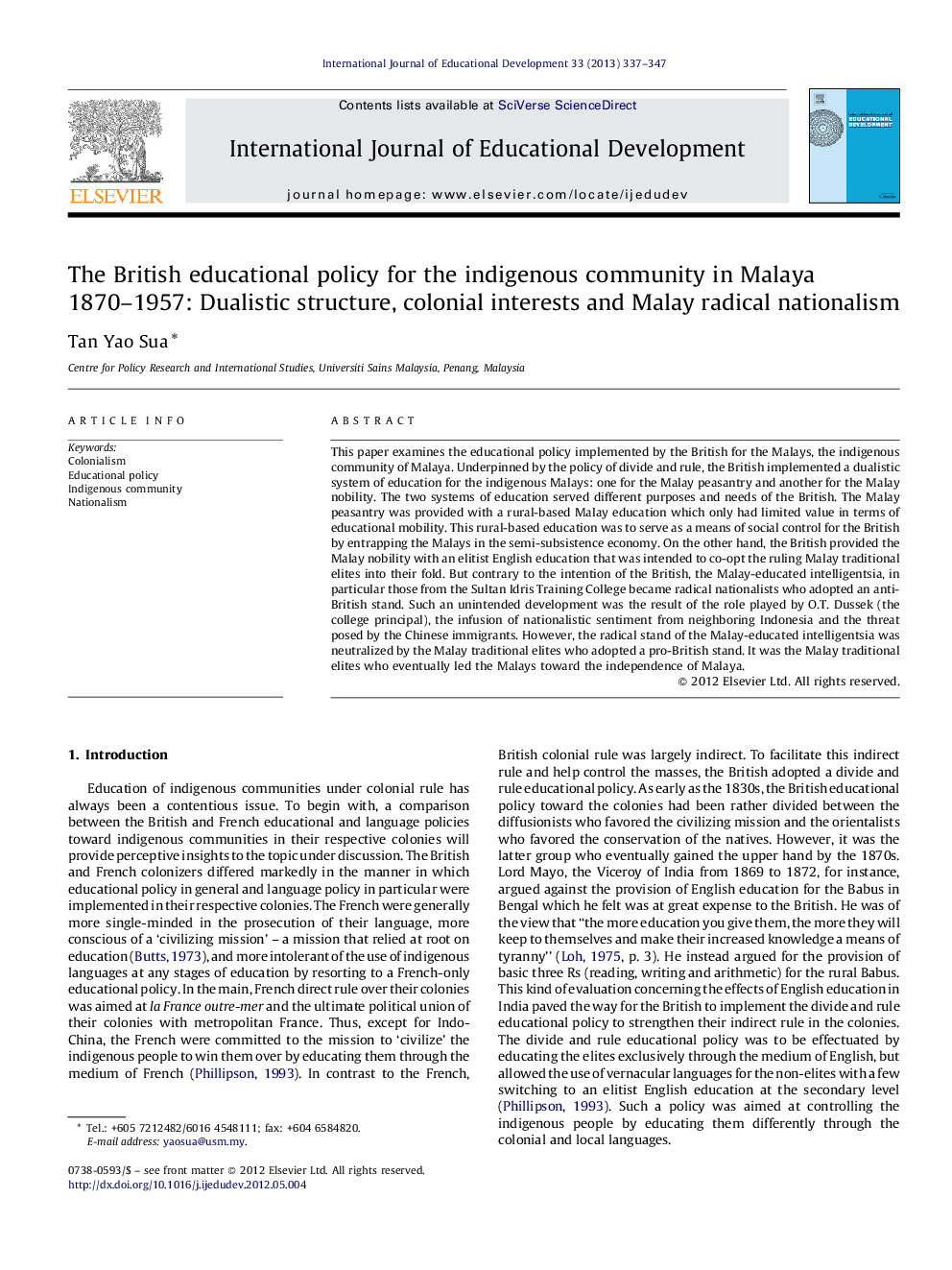| کد مقاله | کد نشریه | سال انتشار | مقاله انگلیسی | نسخه تمام متن |
|---|---|---|---|---|
| 356106 | 1435135 | 2013 | 11 صفحه PDF | دانلود رایگان |

This paper examines the educational policy implemented by the British for the Malays, the indigenous community of Malaya. Underpinned by the policy of divide and rule, the British implemented a dualistic system of education for the indigenous Malays: one for the Malay peasantry and another for the Malay nobility. The two systems of education served different purposes and needs of the British. The Malay peasantry was provided with a rural-based Malay education which only had limited value in terms of educational mobility. This rural-based education was to serve as a means of social control for the British by entrapping the Malays in the semi-subsistence economy. On the other hand, the British provided the Malay nobility with an elitist English education that was intended to co-opt the ruling Malay traditional elites into their fold. But contrary to the intention of the British, the Malay-educated intelligentsia, in particular those from the Sultan Idris Training College became radical nationalists who adopted an anti-British stand. Such an unintended development was the result of the role played by O.T. Dussek (the college principal), the infusion of nationalistic sentiment from neighboring Indonesia and the threat posed by the Chinese immigrants. However, the radical stand of the Malay-educated intelligentsia was neutralized by the Malay traditional elites who adopted a pro-British stand. It was the Malay traditional elites who eventually led the Malays toward the independence of Malaya.
► The British implemented a divide and rule system of education for the indigenous Malay community in Malaya.
► The peasantry was provided with a rural-based Malay education that served as a form of social control for the British.
► The nobility was given an elitist English education that aimed at co-opting the ruling class into the British bureaucracy.
► The Malay-educated intelligentsia became anti-British radical nationalists contrary to the intention of the British.
► The challenges posed by the radical nationalists were blocked by the nobility aligned with the British.
Journal: International Journal of Educational Development - Volume 33, Issue 4, July 2013, Pages 337–347